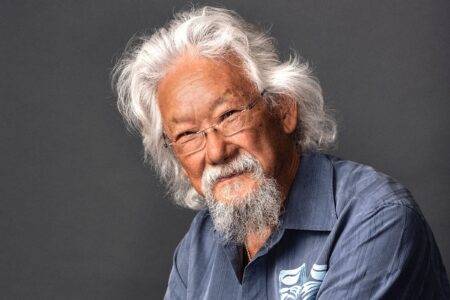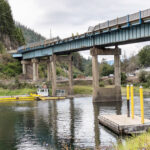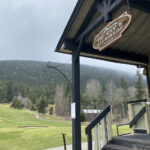Locals learn to harvest water for sustainable gardening
Local permaculture enthusiasts learned about conserving water from Gordon Hiebert — the owner of Element Eco Design. He made a presentation about water harvesting at City Park’s Senior’s Centre, April 9.
The event was hosted by the Grand Forks and Boundary Agricultural Society and included a potluck dinner. The hall was almost full of eager participants that wanted to learn how to improve their gardening and agricultural practices.
“Part of the reason I moved to the Okanogan was, I studied in Australia and learned a lot about water harvesting,” said Hiebert at the beginning of his presentation. “How we can use water to create abundant landscapes. Compared to the world, we live in a water abundant landscape so we just need to learn how to use that water a little more efficiently.”
The methods Hiebert uses takes the idea of sustainability a little farther so that the landscapes become regenerative.
“We are making landscapes better,” he said, adding its about more than just growing seasonal food. The landscapes provide long-term sustainable food and give people food security.
According to Hiebert, the benefits of edible landscapes aren’t just on an individual level — they benefit the whole community. They help develop interpersonal relationships. Hiebert cited an example of a gardener that has an over-abundance of zucchini. That would give the gardener the opportunity to share his food, which helps build a sense of community.
The type of permaculture that Hiebert practices, involves adding something to the environment instead of removing variables. For example, grasshoppers can destroy crops but there are more natural ways of controlling them than simply attempting eradication.
“I would tell you, you don’t have a grasshopper problem,” he laughed. “You have a turkey deficiency.”
In this area, Hiebert said residents have the highest use of water in Canada even though they are in the driest watershed. A lot of water is wasted through storm drains, grey water and plumbing systems.
In his presentation, he showed different ways to catch or control the run of water. He encourages locals to try and harvest the snow as it melts each year because this is how the Boundary area gets the most precipitation.
One model he shared had an umbrella shaped pile of rocks at the top of a hill that would direct the water out and down. At the bottom, was the crescent shape again – this time in a cup form that would help collect the water. This would slow the water down and give it more time to be absorbed into the landscape.
For people that have a stream of water on their property, he said that by making the stream meander, they could encourage the water to spread out over the property.
Swales are another effective way to collect water and by adding a cover crop over the swale, it would make the feature more attractive, prevent erosion and slow evaporation.
A lot of the presentation was relevant to people that had large pieces of property, like farmers, but Hiebert said that the ideas are relevant regardless of how much land is available – everything can be scaled to size.
A smaller home in the city may only need to use rain barrels to collect and distribute water while larger pieces of property could catch water and use it in many ways – including a natural swimming pool. In that situation, certain plants would be used to make the pool self-cleaning.
Hiebert encourages everyone to start harvesting water, regardless of how big their property is. A small house that is 92 square metres (1000 square feet) can collect 95 cubic metres (25,000 gallons) of rain water a year – not including the snowfall.
Animals are also included in the water harvesting plan. Livestock don’t have just one purpose; they also control insects and add nutrients to the soil. For example, cattle will grind their own manure into the soil, helping to break it down. The ideal location for livestock is at a higher elevation so the nutrients from the manure will be spread across the landscape when it rains.
The methods that Hiebert described are based on a system called Keyline designs — although he cited other systems and books. Keyline designs is a method of permaculture that was developed in Australia and is slowly spreading across North America. He said it is becoming quite popular in Oregon and he hopes it will continue to spread in Canada.
For more information, Hiebert can be found at www.elementecodesign.com





















